Here's what's going on within CEREBBRAL Labs
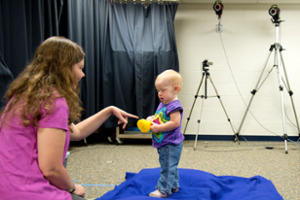
Claxton Research Lab
Dr. Claxton investigates 1) the factors that impact how infants and young children learn to balance (such as learning to sit, stand and walk) and 2) identifies the mechanisms through which balance abilities lead to developmental changes in other developmental domains (such as cognitive and language abilities). For example, when infants first start to stand and walk, they are very unstable and fall a lot. This instability is often attributed to factors such as poor balance abilities, weak muscles, and an underdeveloped brain. However, Dr. Claxton’s research has demonstrated that if you give infants a toy to hold onto, they are able to stand three times longer and demonstrate more advanced control over their balance. These findings challenge traditional views of postural development and improvements in stability, which focus on more maturational and physiological explanations and demonstrate that infants are more advanced in their balance control than previously thought. Current projects include exploring fall behavior in infants, and how object-interactions impact infant gait. Dr. Claxton is also a member of an interdisciplinary research team funded by a grant from the Environmental Protection Agency which is investigating how transitions from crawling to walking can affect children’s health. Dr. Claxton’s lab is also a data collection site for the PLAY project, a nationwide, interdisciplinary, NIH funded project, whose goal is to develop a data set from across the country documenting the behaviors of infants and mothers during natural activity in their homes. The data from all of the sites will be combined (over 900+ infants and mothers) for collaborative analysis to a variety of research questions.
Click here to learn more about the Claxton Lab
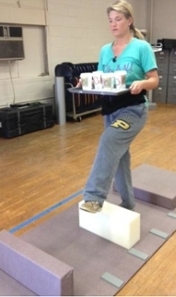
The Human Motor Behavior Group in Health and Kinesiology
Dr. Rietdyk's research focus is the interaction of the neural and mechanical systems in mobility, posture and balance. In particular, how the nervous system integrates the visual and sensory information and coordinates the muscle activity to develop safe, balanced and skillful movement. The mechanical system is very unstable with a high center of mass, a base of support, and three joints in the support limbs. Yet, we move about and interact with the environment with little conscious thought. Disease or aging may lead to delays and degenerations in the balance system. Can we provide interventions which maintain mobility and quality of life for these individuals?
Dr. Haddad's research explores changes in postural stability, manual control, and locomotion that occurs as a function of age, development, and disease. Dr. Haddad is currently investigating decline that occurs in the integration between posture and other supra-postural behaviors in aged populations. This research is specifically examining ways to improve balance (reduce fall risk) in older individuals and individuals with Parkinson's disease as they perform typical daily standing multi-task activities such as talking while producing precision hand movements.
Dr. Ambike's research interest is in studying movement in biological systems and in robots. Dr. Ambike is currently interested in (1) understanding dexterity, (2) obstacle crossing, and (3) precision vs variability in manual behavior.
- Understanding Dexterity. Behavior Dexterity is the judicious utilization of strength, finesse, coordination and swift changes in preconceived motion plans to achieve challenging motor tasks. Dexterity is aquired last during early development, and it is the first to be compromised with aging. We are investigating the effect of age on the ability to modulate the performance of a specific manual task which is embedded in the context of longer tasks with varying complexity.
- Obstacle Crossing. Falls in older adults are a major health concern. Previous work from our lab has shown that during obstacle crossing, the clearance between the toe of the lagging foot and the obstacle diminishes systematically over repeated trials, and often leads to contact - a trip (see Dr. Rietdyk's work). We are examining the source of this variability in toe clearance. Full-body joint kinematics will be obtained with a Vicon system, and the variability structure in joint kinematics will be analyzed to locate the sources of the drift in toe clearance.
- Precision vs. Variability in Manual Behavior. The characteristics of movement variability are often used as an indicator of health status. For example, older adults and Parkinson's disease patients often display a shift from random (uncorrelated) or persistent variability in various motor tasks. However, variability structure can also be influenced by the nature of the task. We are investigating the changes in variability structure of fingertip forces in tasks with varying precision requirements and the degree of redundancy.
Dr. Zelaznik research examines theoretical issues in movement coordination and movement timing. Recently, he has proposed a new framework to examine timing processes in discrete tasks verses continuous tasks. Discrete tasks utilize an explicit, event timing system in which the central nervous system possesses a representation of the timed interval. Continuous tasks, on the other hand, are indirectly timed by the emergent timing. In emergent timing the central nervous system controls other variables of the movement trajectory, with the temporal properties emerging from this control process.
Click here to learn more about The Human
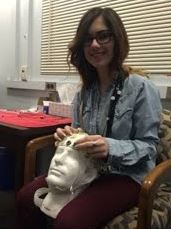
PACER Lab
Dr. Foti's current research is mapping neural measures of reward sensitivity and emotional reactivity to a wide range of psychopathology symptoms. Dr. Foti's lab is specifically contrasting neural sensitivity to monetary reward versus other types of reward, as well as reactivity across reward stages (i.e., pursuit verses attainment). With regard to emotional reactivity, we are disentangling reactivity to appetitive verses aversive stimuli, as well as dynamic fluctuations in reactivity over time. They expect that these neural measures will exhibit highly specific relationships with symptom sub-dimemsions within the internalizing spectrum.
Click here to learn more about the PACER Lab
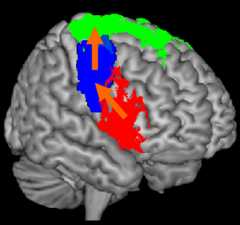
Laboratory for Computational Cognitive Neuroscience
Dr. Helie's research uses different methodologies from cognitive psychology, neuroimaging, and computational modeling to study the relation between the brain and cognitive processing. The goal of the Purdue Laboratory for Computational Cognitive Neuroscience is to use empirical and computational methods to better understand:
- Basal Ganglia
- Categorization
- Automaticity
- Rule-learning
- Sequence learning
- Skill acquisition
- Decision-making
- Knowledge representation
Click here to learn more about the Laboratory for Computational Cognitive Neuroscience

Motor Speech Lab
Dr. Huber's research interests cover a wide range of topics related to quality of life for older adults and individuals with Parkinson's disease.
- SpeechVive Efficacy Studies. We are testing the effectiveness of the SpeechVive, a small wearable device. Often it is difficult for people with Parkinson's disease to remember to use speech therapy techniques during everyday communication environments. The SpeechVive plays noise in one of the wearer's ears while he or she is talking. The noise elicits an automatic reflex to talk louder, at more normal rate, and with improved clarity. The device can be worn throughout the day so that people with Parkinson's disease can obtain better communication effectiveness in their everyday lives.
- Walking and Balance Training Studies. The goal of these studies is to examine how effective a variety of training paradigms are for improving balance and walking in older adults with and without Parkinson's disease. Common daily tasks (like walking and talking) are typically multi-task in nature and more complex than they appear. Recent evidence suggests that falls occur more often during these common daily activities. Despite this, the efficacy of most training studies have been established using standardized balance scales or single measures rather than complex tasks which mimic those performed in daily life. To foster independence and quality of life, it is critical to establish the effectiveness of training paradigms for improving activities that are commonly encountered in everyday life.
- Medical and Surgical Treatment of Parkinson's Disease: Effects on Communication and Cognition.
Click here to learn more about the Motor Speech Lab
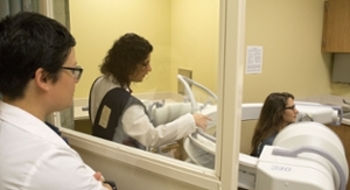
I-EaT Research Lab
The Purdue I-EaT Swallowing Research Lab in the Speech, Language, and Hearing Sciences Department is under the direction of Assistant Professor, Georgia A. Malandraki.
The lab is dedicated to high-level swallowing clinical research and to improving the health and quality of life of children and adults with swallowing disorders (also known as dysphasia). The research conducted in the Purdue I-EaT Lab focuses on three main areas: a) the use of advanced imaging to understand the neural underpinnings of swallowing in the normal population and following trauma or intervention, b) developing and evaluating new intensive neurorehabilitation paradigms and their effectiveness in neurogenic dysphasia, and c) the development and application of telehealth systems to provide swallowing rehabilitation from a distance.
Click here to learn more about the I-EaT Research Lab

Richards Lab
Dr. Richards' research is focused on population-based physical activity promotion. Her research describes the individual, interpersonal, and environmental influences of physical activity. Her methods include survey development, modeling associations, and intervention development and evaluation. She has developed a walking intervention using a dog walking strategy and has assessed the health outcomes of this intervention. She is currently collaborating with Dr. Melissa Franks and Meghan McDonough in implementing and assessing a dyadic goal-setting physical activity intervention in older adults. In addition, she serves in several leadership positions in the field of public health, including as a Board member for the Indiana Public Health Association and as a member of the American Public Health Association Action Board. She is one of seven individuals hired by Purdue University to promote research across disciplines in public health.
Click here to learn more about Dr. Richards

Redick Lab
Dr. Redick's lab is currently focused on three separately funded projects:
1. Understanding why individuals vary working memory and attention, and how this is related to reading comprehension outcomes. In addition, can we use this knowledge to improve interventions that are tailored to the individual? (funded by NSF)
2. Looking at how working memory, attention, and decision-making are related in individual with and without alcohol use disorders. Are cognitive training methods effective in these individuals? (funded by NIAAA)
3. Examining the role of memory, attention, and multitasking in contexts where workers interact with robots and use virtual and augmented reality (funded by NSF)
Click here to learn more about Dr. Redick
Click here to follow Dr. Redick's Lab on Twitter: https://twitter.com/redick_lab
Aphasia Research Lab
Dr. Lee's Aphasia Research Lab mission is to understand how persons with aphasia process information during language comprehension and production and to identify the linguistic and non-linguistic factors that maximize re-learning of language. The Aphasia Research Lab is conducting studies that aim to better understand how aphasia affects one's ability to produce sentences and words. The goal of these studies is to develop new language treatment for people with aphasia.
The Purdue Aphasia Group offers a FREE support group for adults with aphasia and their loved ones. The monthly meetings offer guided conversation practice, education sessions and opportunities for connecting with others. The group meets one time per month during the semester from 6:30-8:00 pm on campus at Lyles-Porter Hall, 715 Clinic Drive, West Lafayette, 47907.
Click here to learn more about the Aphasia Research Lab
Click here for updates and more information about Purdue Aphasia Group.
Click here for Aphasia Resources at Purdue University
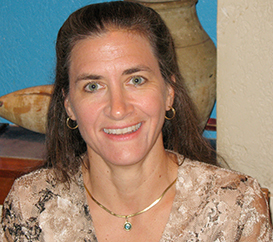
Sereno Research Lab
The long range goal of Dr. Sereno's research is to understand and characterize the physiological mechanisms of attention, short-term memory, and the programming of eye movements, in order to help in the diagnosis, treatment, and etiology of various diseases and disorders.
Click here for more information about the Sereno Lab
Click here for link to Psychological Sciences
Click here for link to Biomedical Engineering

Kinzig Research Lab
Research in the Kinzig lab focuses on the behavioral and neuroendocrine components of obesity, eating disorders, and affect over the course of the lifetime. Current research aims to understand how diet-type influences the blood-brain barrier and diet-induced consequences of barrier leakage, and to determine shared mechanisms underlying metabolic diseases and affective disorders.
Click here to learn more about the Kinzig Lab
Bowman Lab
Dr. Bowman's lab utilizes a combined approach of molecular genetics, pharmacology, biochemistry, cell and developmental biology to understand the role of gene-enviroment interactions between metal exposure and neurodegenerative diseases. The lab employs a diverse range of model systems including patient-derived induced pluripotent stem cells (iPSCs), neuronal cultures and mouse models. The lab aims to define mechanisms of neuronal dysfunction and understand the basis of selective neuropathology, by characterizing the molecular function of disease genes and their interaction with enviromental toxicants under both normal and pathological conditions. The lab's long term goal is to use a personalized medicine approach to investigate patient-specific toxicant vulerabilities and develop neuroprotective strategies that mitigate neurological diseases with enviormental etiologies.
- Research
- Current Research


